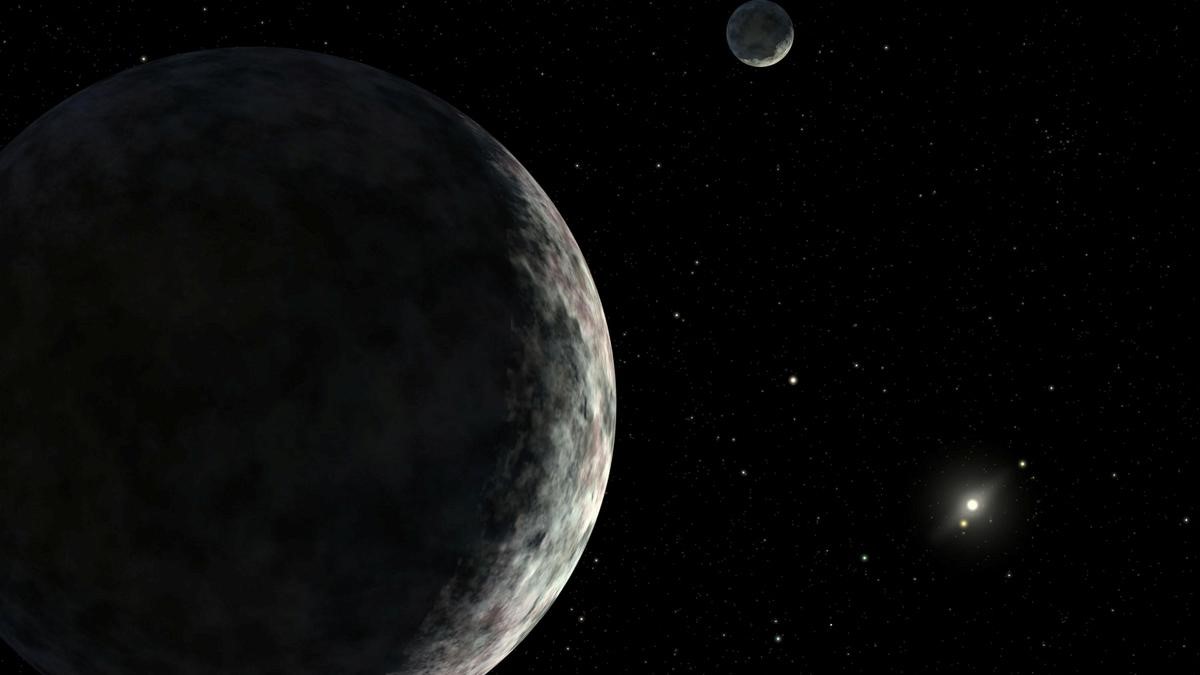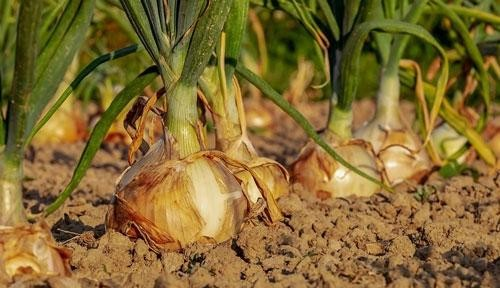Description

Disclaimer: Copyright infringement not intended.
Context
- Scientists are gaining a fuller understanding of Eris and its differences with Pluto basis research that discerns details about this frigid remote world's internal structure and composition based on its orbital relationship with its moon Dysnomia.
Details
- Introduction to Eris:
- Eris, discovered in 2005, is a dwarf planet located in the outer solar system.
- Similar in size to Pluto, it has distinct characteristics that differentiate it from its cosmic cousin.
- Recent Discoveries:
- Recent research has focused on understanding Eris' internal structure and composition without direct exploration, using observations of its moon Dysnomia.
- Internal Structure:
- Eris is believed to have a rocky interior covered by an icy shell, differing from Pluto's composition.
- Previous assumptions questioned whether Eris separated rock from ice, indicating past heating that caused rock to sink while the ice experiences slow churning motion due to remaining internal heat.
- Comparative Analysis:
- Comparison with Pluto reveals differences in their compositions and density profiles.
- Eris has more rock concentration, making it denser than Pluto, which has a higher ice content and possibly a subsurface ocean.
- Physical Characteristics and Orbit:
- Eris has a diameter of approximately 1,445 miles (2,326 km), slightly smaller than Pluto.
- Dysnomia, Eris' moon, measures around 440 miles (700 km) in diameter and is primarily composed of ice.
- Orbital Dynamics:
- The Eris-Dysnomia system exhibits synchronous rotation, where both bodies always present the same face to each other, unlike the Earth-moon system.
- Implications and Insights:
- The findings provide context for understanding dwarf planets beyond Pluto and caution against drawing generalized conclusions based solely on Pluto's characteristics.
- They emphasize the uniqueness of each major dwarf planet and the complexity within our solar system's celestial bodies.

About Dwarf planets
- Dwarf planets are celestial bodies that orbit the Sun and share similarities with planets but do not meet all the criteria to be classified as full-fledged planets.
- The classification of dwarf planets was introduced by the International Astronomical Union (IAU) in 2006.
Definition and Characteristics:
- IAU Definition:
- According to the IAU, a dwarf planet is a celestial body that orbits the Sun, has sufficient mass for its gravity to shape it into a nearly round shape (hydrostatic equilibrium), but has not cleared its neighboring region of other debris.
- Size and Shape:
- Dwarf planets are typically smaller than full-sized planets but larger than most asteroids or minor planets.
- They have enough mass for their gravity to mold them into a nearly spherical shape.
- Orbital Characteristics:
- Dwarf planets orbit the Sun and follow an orbital path similar to that of planets but might have irregular or elliptical orbits.
Examples of Known Dwarf Planets:
- Pluto:
- Pluto was considered the ninth planet before being reclassified as a dwarf planet. It is the most famous and the largest known dwarf planet in our solar system.
- Eris:
- Eris, discovered in 2005, is one of the largest dwarf planets and is located in the Kuiper Belt, like Pluto.
- Ceres:
- Ceres, located in the asteroid belt between Mars and Jupiter, was the first object to be classified as a dwarf planet in 2006.
- Haumea and Makemake:
- Haumea and Makemake are other notable dwarf planets in the Kuiper Belt, each with unique characteristics.
Properties and Composition:
- Composition:
- Dwarf planets are composed of various materials, including rock, metals, and icy substances like water, methane, or ammonia.
- They might have different surface compositions, with some showing evidence of geological activity or surface features.
- Atmosphere:
- Some dwarf planets have thin or trace atmospheres, while others might have none.
Exploration and Study:
- NASA Missions:
- Various space missions, including New Horizons (for Pluto), Dawn (for Ceres), and others, have provided crucial data and insights into the characteristics, compositions, and surface features of dwarf planets.
- Observations and Studies:
- Astronomers and space agencies continue to observe and study dwarf planets using ground-based telescopes, space telescopes, and space probes to gather more information about their properties and origins.

Conclusion
Eris' discovery and the recent insights highlight the diversity within the solar system and enrich our understanding of celestial objects beyond recognized planets.
|
PRACTICE QUESTION
Q. What is the primary reason for Pluto's reclassification as a dwarf planet by the IAU?
A) Its distance from the Sun
B) Its lack of moons
C) Its irregular orbit
D) Its failure to clear its orbital path of debris
Answer: D)
|
Array
(
[0] => daily-current-affairs/dwarf-planet-eris
[1] => daily-current-affairs
[2] => dwarf-planet-eris
)











